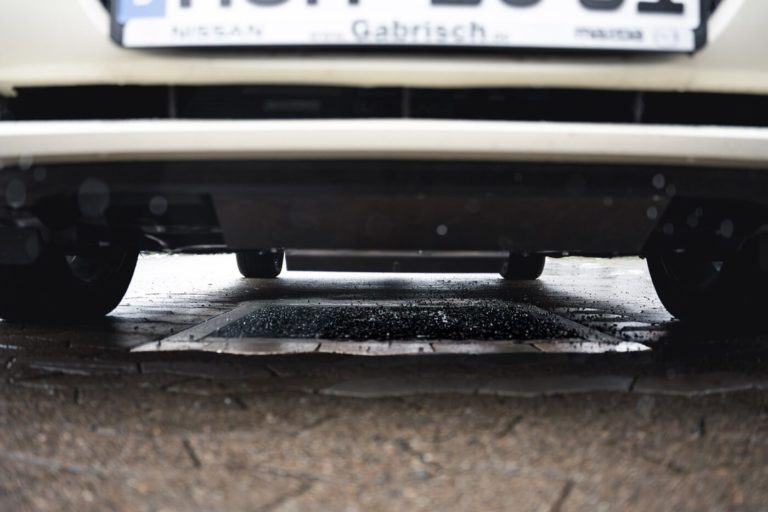The consortium has been developing and testing the inductive charging system since 2019. As announced at the final event in Hanover, the “practical tests under laboratory conditions” were successful. Electric vehicles can be charged wirelessly on a test track over 90 metres on up to 12 induction coils on the grounds of Hanover University of Applied Sciences and Arts. The technology will also be available to the university for research and teaching after the project has been completed.
The special features of the project are the integration of the induction coils into the asphalt, the control of the required charging power by the vehicle side, for which a patent application has been filed, and the partial accommodation of the charging electronics in underground control cabinets.
The LaneCharge project was launched in 2019. Together with industry partners, researchers at Hanover University of Applied Sciences and Arts wanted to develop a fully functional inductive charging system, which was tested in the final phase of the project with two converted vehicles at the cab rank in Rundestraße on the north side of Hanover Central Station. As part of this project, the development service provider EDAG developed the solution with charging intelligence in the vehicle as a project partner. EDAG was responsible for the power electronics and the integration of the individual assemblies into the vehicle. The approach: if most of the charging technology components are installed in the vehicle, the technology embedded in the road becomes cheaper and more robust – which should enable faster expansion. Another advantage is that no additional charging points are required and the system blends neutrally into the streetscape.
However, the system is not intended for inductive charging while driving. “The inductive charging system developed in the project allows continuous intermediate charging for ‘stop & go situations’, such as at a cab rank, which enables a smaller battery capacity or an increased vehicle range,” says Heiko Hepp, professor at Hanover University of Applied Sciences and Arts. “The charging system is particularly attractive for local authorities and infrastructure operators, as charging points can be created without changing the cityscape.”
“Inductive charging is not just an issue for electric vehicles – we see great potential for the use of this technology in intralogistics in particular. The advantages are obvious: on the one hand, of course, the convenience. But even more important is the potential for automation,” said Matthias Girlach, Head of Embedded Systems at the EDAG Group. “For automated vehicles, both in private and non-public areas such as industrial parks or on airport aprons, inductive charging is becoming an exciting factor. We are already in contact with the first new customers from the industrial electronics sector.”
The university acted as consortium leader and was responsible for project management, power control and communication systems. As mentioned, EDAG was responsible for power electronics and vehicle integration, Sumida Components & Modules GmbH supplied the induction coils and the Technical University of Braunschweig developed the road integration. Enercity AG, Götting KG, Hallo Taxi 3811 GmbH and the state capital of Hanover were involved as associated partners.
now-gmbh.de, Info via email


